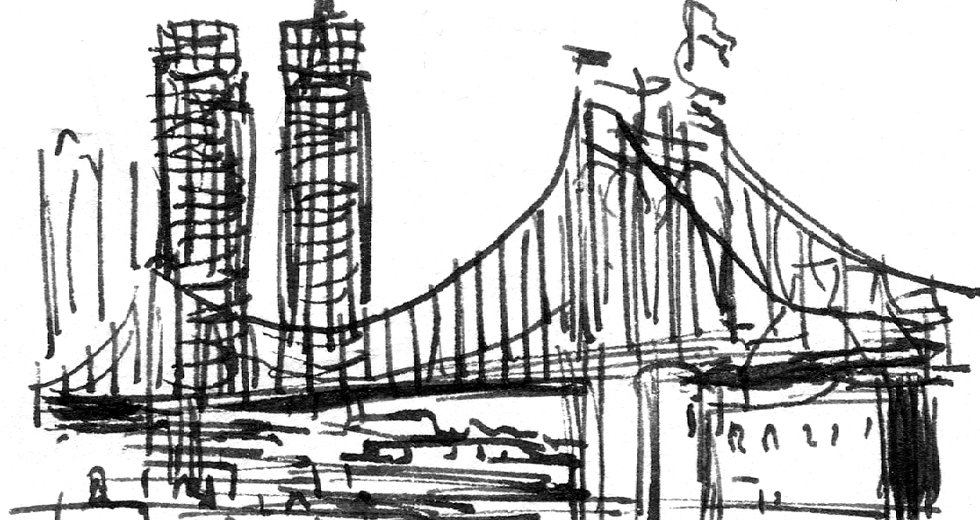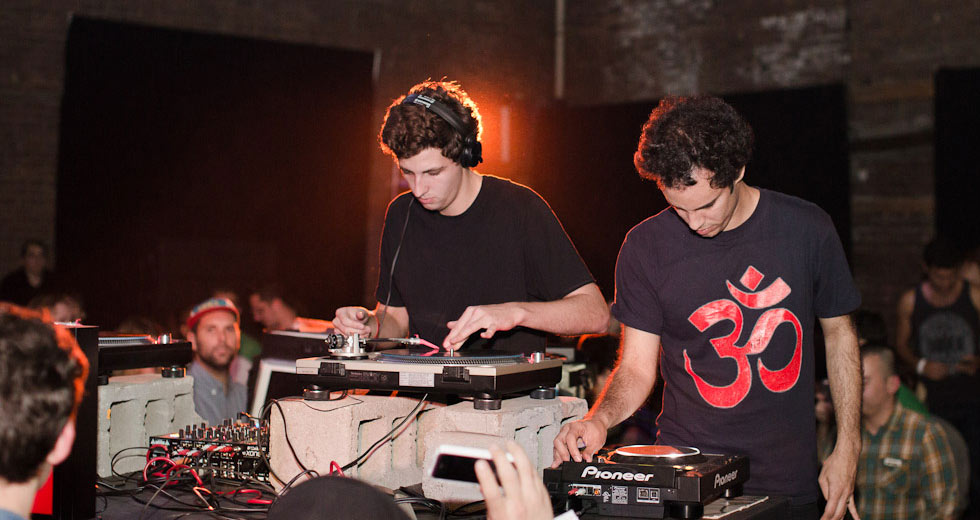Philip Smart: New York Reggae Foundations
The grimy streets of New York City’s outer boroughs – Brooklyn, the BX, Queens, Shaolin, even parts of Strong Island – ran red hot throughout the 1980s. Between Reaganomics, AIDS and the crack epidemic, Gotham society’s cellar-dwellers had all the pressure they could handle. In those bygone days, Afrika Bambaataa’s 1982 track “Planet Rock” expressed a trans-global Zulu Nation with just one urgent agenda: to rock, rock... don’t stop. But Bam and company’s sonic shockwaves were not the only ultra-low-frequency vibrations blasting through the ghetto ether. Alongside Planet Rock rumbled the Real Rock, AKA dancehall reggae.
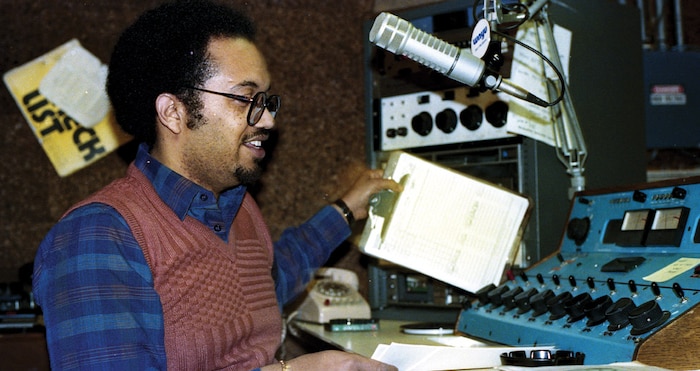
Dancehall had been a consistent presence in the New York City soundscape since the early 1970s, when an influx of Caribbean immigrants seeking economic opportunities brought their sound-system culture with them. One of those to make the journey from Jamrock was a young studio engineer and record producer named Philip Smart, whose New York pilgrimage would prove a fateful development in the evolution of NYC’s musical landscape. “Philip Smart is the man who made the whole New York reggae scene really come alive,” says Shaggy, the world’s biggest-selling reggae artist, who was a teenage Jamaican immigrant living in Brooklyn when he made his first hit single at Smart’s HC&F studio.
Smart started collecting records in Kingston, Jamaica, around the age of 12. By 14, he and his friend Augustus Pablo were saving up lunch money to book studio time; they eventually wound up in the legendary soundlab operated by Osborne Ruddock, AKA King Tubby, the man who invented the seminal musical technique known as dub. Like King Jammy and Scientist, Philip Smart graduated from Tubby’s dub university – but unlike the other alumni, Smart took his skills on the road.
Strategically located a short drive from JFK International Airport, the HC&F studio became the go-to spot for local talent as well as visiting dignitaries.
Soaking up the finer points of Tubby’s bass- heavy mixing style, Smart shaped the sound of reggae classics like Johnny Clarke’s “None Shall Escape the Judgment.” Smart remembers that session as a turning point. “In my estimation, a good producer can feel, hear and see a hit record before it happens – from the first note,” recalls the witty, bespectacled music man, taking a break from running the studio on a Saturday evening. “My first experience with that was I worked with Bunny ‘Striker’ Lee on ‘None Shall Escape the Judgment.’ I said, ‘Yo, this record is hot.’ He said, ‘Alright, if you’re feeling it, mix it off and I’ll put it out.’” The record became a sound-system smash and Philip knew from then on to trust his instincts.
By the time Smart arrived in New York in his early 20s, there was already a well-established network of Jamaican producers and sound systems, enough to keep a handful of reggae studios in business. Chin Randy’s and Wackies kept the Bronx bubbling, while Jah Life Outernational in Brooklyn held marathon dances in smoky basements with plenty of fresh juice, roots tonic and heaping stacks of bone-rattling dub. Smart took classes in multitrack production and radio broadcasting and did freelance engineering gigs around New York, mixing classic roots-reggae sets like Macka Dub for Brad’s Records.
In 1982, the same year Bambaataa dropped “Planet Rock,” Smart established the HC&F Recording Studio (the letters in the name represent the three families who invested in Smart’s dream) in Freeport, Long Island, which quickly became the nerve center of New York’s indigenous reggae scene. Strategically located a short drive from JFK International Airport – where most Jamaican artists book their hotels, to reduce the chance of missing their flights home – the studio became the go-to spot for local talent as well as visiting dignitaries like Shabba Ranks. But Smart says the choice of location was primarily motivated by security concerns. “Brooklyn was under siege,” he says, referring to the street violence that plagued the borough during the height of the crack era. “Plus most of the studios in Brooklyn were specializing in dubplates. We wanted a place that was focused on making records.” He first set up shop in his brother-in-law’s Long Island basement. “We had a dub-cutting machine and we had an eight-track board and we had a drum set. But then the neighbors used to complain about the noise.”
Members of the band Monyaka assisted with the construction of the new studio and tested out the equipment. The first recording made at HC&F, the band’s “Go Deh Yaka,” was played by Frankie Crocker on WBLS and went on to hit the UK pop charts. “We felt good,” Smart remembers. “That wasn’t just a hit, it was a crossover hit.” But paradoxically this initial success was actually counterproductive to Smart’s true objective. “The main goal was always to make New York known as a reggae town,” he explains. “We had to prove that reggae could be done here. And I think we did that.”
Reggae purists often viewed New York dancehall with skepticism, but HC&F soon earned a reputation as the studio to get the authentic Jamaican sonic texture.
Reggae purists often viewed New York dancehall with skepticism, but HC&F soon earned a reputation as the best studio in New York to get the authentic Jamaican sonic texture. “I wasn’t trying to copy anybody’s sound,” Smart says. “I was just trying to make my own sound. And you had to get it close to Jamaica or else they wouldn’t work here. So we tried to get it as close as possible until we had the hit.” Many tracks that are assumed to be Jamaican productions were actually voiced and mixed at HC&F.
Hyman ‘Jah Life’ Wright was the first true believer. “Good music can be made anywhere,” Jah Life says, “and Mr. Smart has the right touch.” A producer with strong ties to Henry ‘Junjo’ Lawes of the legendary Volcano Hi-Power sound system, Jah Life established a base of operations in Brooklyn during the 1970s. It was he who brought Barrington Levy into HC&F where they voiced the dancehall classic “Murderer.” Using the same Hot Milk riddim, Jah Life also produced Carlton Livingston’s “100 Weight of Collie Weed” – a song that would later get interpolated into Boogie Down Productions’ “100 Guns” and Ja Rule’s smash hit “New York.”
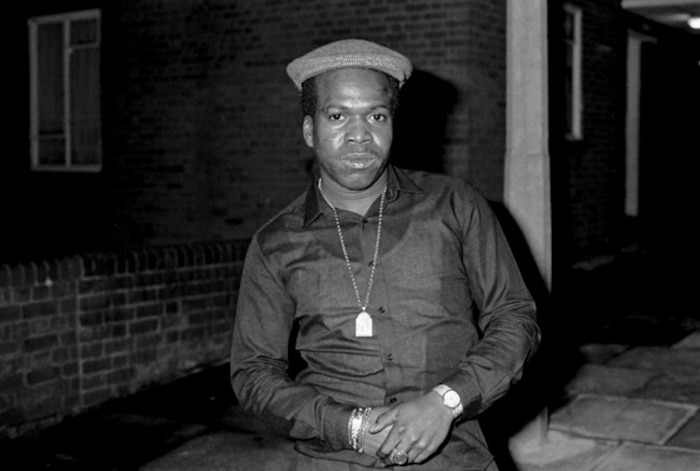
Barrington Levy Credit: David Corio/Redferns
Such landmark records helped HC&F earn maximum respect throughout the reggae diaspora, to the point where any great Jamaican artist passing through New York would make a stop there to see wha gwan – resulting in numerous serendipitous sessions. “We played host to everybody in the reggae business and further – hip hop, everybody,” says Smart. For instance, Heavy D and Super Cat made their history-making collaborations at HC&F. And before she was featured in the Jonathan Demme film Something Else, Sister Carol cut her Black Cinderella album at HC&F. “When what’s-his-name – David Letterman – held that album up on TV and he said, ‘Check Sister Carol’s Black Cinderella album out,’ it flew out of the stores the next day,” Smart recalls. “We felt good. We were making a mark in the industry in New York.”
Long before Super Cat’s historic Wild Apache sessions or Shaggy’s multi-platinum hits were laid down there, HC&F was home base for New York’s dancehall underground. Musicians like Computer Paul, Menacing Dennis, Raff and Nass-T laid down some of the rawest digital riddims ever heard, seasoned by ace Jamaican hornsmen like Tom & Jerry and Dean Fraser – and, of course, Dr. Smart providing his inimitable mix.
Nor was there any shortage of vocal talent. Any big Jamaican artist visiting New York for a show was certain to pass through the House that Smart Built to catch a vibe and voice two tunes. These days it might be Sizzla or Shabba Ranks. In the ’80s and early ’90s, it was Admiral Tibbett, Barrington Levy or the late Garnet Silk. Meanwhile, a growing roster of New York-based reggae artists – singers like Sammy Levi, Scion Sashay Success, Sluggy Ranks, Natural E and the late Trevor Sparks and deejays like Screechy Dan, Red Fox and Sister Carol – were helping shape the sound of New York-style dancehall reggae.
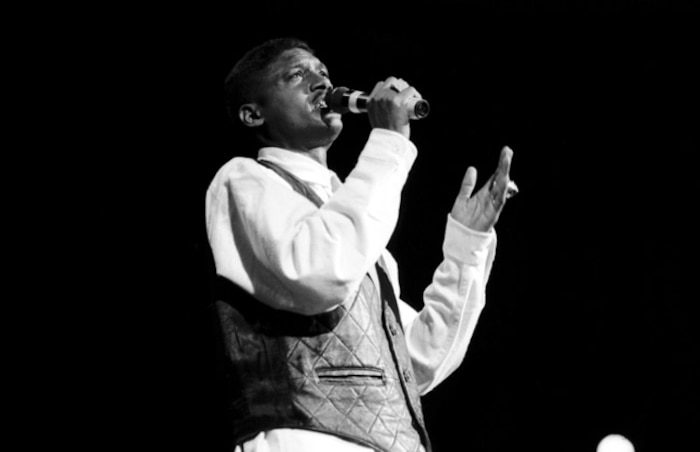
Super Cat Credit: David Corio/ Redferns
Somewhere around 1985, reggae underwent a digital revolution. King Jammy’s Sleng Teng was certainly the best known riddim, but the raw computerized instrumentals constructed at King Tubby’s studio (and released on the Firehouse and Taurus labels) explored the furthest frontiers of what would later come to be called electronica. These Jamaican-produced dance records sounded phenomenal on a booming yard-style system – the digital bass so clean and forceful, the echo and sound effects damn near psychotropic. The digital sound was hitting hard in the yard and abroad, where the connections to electro and hip hop (as well as Latin freestyle) were immediate and far-reaching. The music started to coalesce in all sorts of interesting ways, mingling the DNA of such hybrid offspring as Boogie Down Productions (reggae-flavored rap) and Shinehead (vice versa), not to mention El General’s proto-reggaeton.
“Big ups to Philip for actually giving a Marine [like me] an opportunity to come on a hit riddim.”
When he wasn’t engineering and mixing other producers’ sessions, Smart also worked on his own productions, released on the Eclipse and Tan Yah labels. Songs like “The Trainer” by Scion Sashay Success still sound as futuristic today as when they first touched the road. “It’s something that’s never been heard,” says Smart. “You have to flow with what you feel, and we wanted to innovate and do something different. ’Cause them time deh everybody did lick over every Studio One riddim. I did it too. But I knew that we had passed that point. Time for the next thing.”
Smart’s 1992 digital re-imagining of Jackie Mittoo’s timeless Drum Song riddim yielded smash hits like Dirtsman’s “Hot This Year,” which was a big hit on the New York scene and beyond – even in Jamaica. “I remember hearing the Dirtsman version of ‘Hot This Year’ in a club called the Harambe back in the day,” recalls Shaggy. “We went to HC&F Studio and recorded a song called ‘Mampie’ on the same riddim. At that time I was still in the military. So big ups to Philip for actually giving a Marine that loved music and really wanted to be a part of the music scene an opportunity to come on a hit riddim. The record was a massive success and that’s when people started to know about Shaggy.”
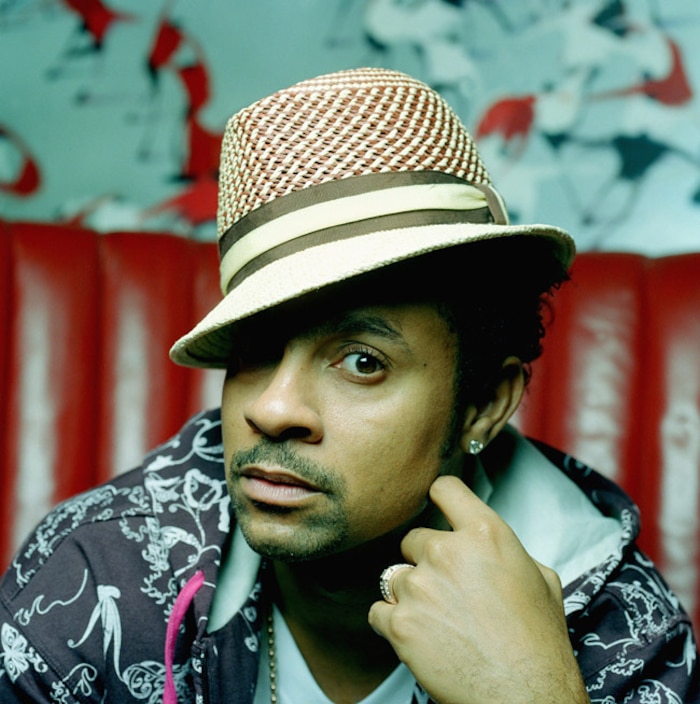
Shaggy Credit: Eamonn McCabe/Redferns
Shaggy soon became an international pop star, booking out HC&F for months at a time to work on tracks like “Boombastic,” which only added to the HC&F legend. “The hits that Super Cat was making, Shaggy was making, Shabba was making – those were what gave us the credibility,” says Smart. Before long, ace Jamaican producers like Mikey Bennett were coming from Jamaica to work at HC&F. “He came here and did ‘Mr. Loverman’ with Shabba,” Smart recalls proudly. “We had a sound. They wanted that international sound.”
Besides his work at the studio, Smart had one of the most popular reggae shows on New York radio, Get Smart on WNYU. “I used to play the latest songs out of Jamaica and New York,” he recalls. “I would blend them together so people didn’t know which one was from NY and which one was from Jamaica.” Because of his strong connections with Jamaican producers, he had all the newest records. “We broke the Dawn Penn record ‘No No No’ and ‘Ting A Ling’ by Shabba,” he says. “We played that without authority and the record company called [producer] Steely. They said, ‘I heard that record playing on the radio. We didn’t want to put that out.’ But after that they had to.”
When the real guts-and-glory story of New York reggae is properly told, the name Philip Smart should be writ large on the cover.
For Jamaicans living in the megalopolis, dancehall was maybe even more important than hip hop because, in addition to entertainment and employment, each week’s deluge of fresh vinyl served as a kind of broadband connection to their island homeland, transmitting high-bitrate signals in both directions about how the yard massive was living inna Babylon. Although the Kool Herc connection between Jamaican sound systems and American hip hop is now well known (peep Jeff Chang’s crucial Can’t Stop Won’t Stop should you require a refresher), the real guts-and-glory story of the New York reggae scene has yet to be recorded.
When that story is properly told, however, the name Philip Smart should be writ large on the cover. For now he remains one of reggae music’s best-kept secrets, but those who need to know – they know. “Big ups to Philip every time,” says Shaggy. “He continues to be a real music lover and a driving force in the genre of reggae. Salute.”
Thirty-one years after opening the studio, Smart is still at HC&F every day, pushing forward. “Everybody’s searching right now,” he says of the future of reggae. “I don’t think anybody has really found it. I like some of what Mavado’s doing. I like what Sean Paul is doing. It’s about building an audience. We still do the staple – the bass-and-drum songs, the one-drop songs. We do the dancehall songs. But we’re searching for something that’s gonna be different. And then maybe it will happen and become a new era of reggae.” As someone who has presided over numerous stylistic breakthroughs and historic recordings – from dub to dancehall and hip hop fusion – Smart doesn’t need to search anymore. His legacy is secure. So what keeps him coming back night after night? Must have something to do with love.
A version of this article appeared in The Daily Note, a free daily newspaper distributed in New York during the 2013 Red Bull Music Academy. Header photo: Beth Lesser. Rob Kenner is a senior editor at Complex Media, founder and publisher of Boomshots.com, and host of the Strictly Boomshots show, which airs Mondays from 7-10pm EDT on RadioLily.com. He tweets as well: @boomshots.
